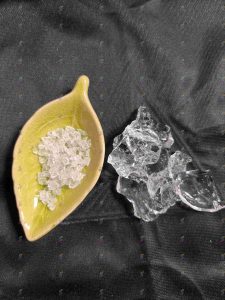Liquid absorbent materials are integral to numerous industries and everyday uses due to their remarkable ability to absorb and retain liquids. From healthcare to agriculture, these materials have brought about significant advancements. In this blog post, we’ll delve into the various applications of liquid absorbent materials and understand their importance.
What Are Liquid Absorbent Materials?

Liquid absorbent materials are substances designed to soak up and retain liquids. They include a variety of forms such as liquid absorbing agents, liquid absorbing
The Science and Applications of Liquid Absorbent Materials
Liquid absorbent materials play a pivotal role in a wide array of industries and everyday applications. Renowned for their capacity to absorb and retain liquids, these materials have transformed fields ranging from healthcare to agriculture. This blog post explores the diverse applications of liquid absorbent materials and elucidates their mechanisms.
What Are Liquid Absorbent Materials?
Liquid absorbent materials are substances engineered to soak up and retain liquids. These materials encompass various forms, including liquid absorbing agents, liquid absorbing compounds, and liquid retention materials. They are instrumental in managing and controlling the presence of liquids in different environments.
Key Types of Liquid Absorbent Materials
- Super Absorbent Polymers (SAPs): Known for their high absorbency, SAPs can absorb and retain substantial amounts of liquid relative to their mass. They are widely used in products such as diapers, adult incontinence pads, and sanitary napkins.
- Hydrophilic Materials: These materials attract water and other liquids, making them ideal for moisture absorption. Examples include hydrophilic polymers used in medical dressings and water purification systems.
- Water Absorbent Polymers: These polymers swell upon contact with water, effectively retaining the absorbed liquid. They are utilized in agricultural applications to maintain soil moisture and in horticulture to support plant growth.
Applications of Liquid Absorbent Materials
1. Healthcare: Liquid absorbent materials are crucial in healthcare, used in products like wound dressings, surgical pads, and medical sponges. Super absorbent polymers ensure that wound dressings can manage exudate, maintaining an optimal wound environment for healing.
2. Personal Care Products: In personal care, high absorbency materials are used in products such as diapers, sanitary napkins, and adult incontinence products. These materials provide comfort and hygiene by effectively absorbing and locking away moisture.
3. Environmental Cleanup: Water absorbing substances are vital in managing oil spills and chemical leaks. Absorbent materials for liquids, such as absorbent booms and mats, are deployed to contain and clean up hazardous spills.
4. Agriculture: Water retention substances and liquid retention agents are essential in agriculture. These materials help maintain soil moisture, reducing the need for frequent irrigation and supporting plant health during dry periods.
5. Industrial Applications: In industrial settings, moisture absorbing materials protect sensitive equipment from humidity and condensation. Liquid absorbing compounds are also used in packaging to keep products dry during transportation and storage.
6. Consumer Products: Liquid absorbing agents are found in everyday consumer products such as desiccant packs, which keep food and electronics dry, and cleaning products that quickly soak up spills.
Examples of Water Absorbing Materials
Examples of liquid absorbing compounds include materials like silica gel, widely used in packaging to control moisture, and cellulose-based products, known for their natural hydrophilic properties and used in a variety of absorbent applications.
Conclusion
Liquid absorbent materials are indispensable across a wide range of applications due to their effectiveness in managing and controlling liquids. From healthcare and personal care to environmental cleanup and agriculture, these materials ensure safety, hygiene, and efficiency. Understanding the different types and applications of liquid absorbent materials highlights their significant role in our daily lives and various industries.
Whether it’s super absorbent polymers in diapers or moisture absorbing materials in electronic packaging, the science of liquid absorption continues to evolve, offering innovative solutions to meet the demands of modern society.

